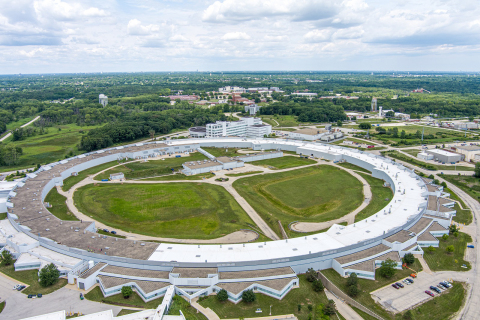As the COVID-19 vaccines roll out across the country, the record-setting pace of the vaccine development may seem to many like an overnight success story. In reality, it was built on more than a decade of research into other viruses at the U.S Department of Energy’s (DOE) Argonne National Laboratory’s Advanced Photon Source (APS). This press release features multimedia. View the full release here: https://www.businesswi
LEMONT, Ill.--(BUSINESS WIRE)-- As the COVID-19 vaccines roll out across the country, the record-setting pace of the vaccine development may seem to many like an overnight success story. In reality, it was built on more than a decade of research into other viruses at the U.S Department of Energy's (DOE) Argonne National Laboratory’s Advanced Photon Source (APS).
This press release features multimedia. View the full release here: https://www.businesswire.com/news/home/20201218005498/en/

Advanced Photon Source at Argonne National Laboratory (Photo: Business Wire)
Five of the vaccines, including those developed by Pfizer/BioNTech and Moderna, contain genetic mutations that increase effectiveness in fighting the SARS-CoV-2 virus. This pivotal discovery is based upon work dating back more than 10 years using the resources of the APS, a DOE Office of Science User Facility at Argonne.
The mutations were developed by Jason McLellan, now an associate professor at the University of Texas at Austin, and Barney Graham, currently the deputy director of the Vaccine Research Center at the National Institute of Allergy and Infectious Diseases, part of the National Institutes of Health (NIH). The pair’s current work on COVID-19 vaccines was heavily influenced by their research into an entirely different disease: respiratory syncytial virus (RSV), which affects thousands per year.
Between 2009 and 2013, McLellan, Graham and their colleagues worked to design an RSV vaccine that would target one of the virus’s proteins in a more vulnerable form, neutralizing it more effectively. Parts of that work were done at the APS, using ultra-bright X-ray beams to determine the structures of the virus’s proteins.
The pair’s RSV vaccine is now entering phase three trials, but McLellan and Graham soon realized that the same technique could work to inhibit coronaviruses as well. And when the SARS-CoV-2 outbreak began, the two joined forces again to see if their genetic mutation would provide the same advantage against this new virus.
The initial results of their work, a mutation called S-2P, is now in SARS-CoV-2 vaccines developed by Moderna, Pfizer/BioNTech, Novavax, Johnson & Johnson and CureVac.
“Just as what we learned from previous outbreaks helped to create vaccines and treatments at record speed, what we are learning about SARS-CoV-2 at the APS will help fight not only this outbreak, but future ones,” said Stephen Streiffer, Argonne’s deputy laboratory director for science and technology and the interim director of the APS.
For more information please contact Christopher J. Kramer at media@anl.gov.
View source version on businesswire.com: https://www.businesswire.com/news/home/20201218005498/en/
Source: Argonne National Laboratory







